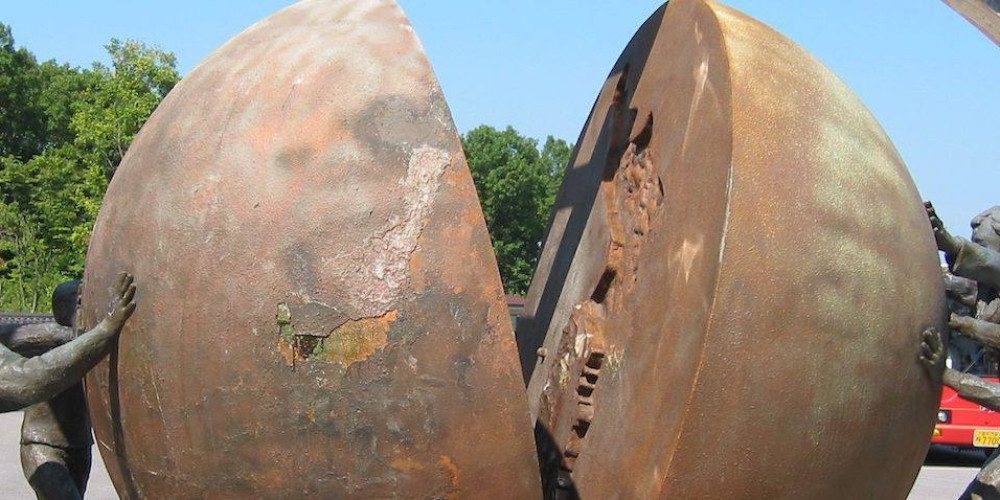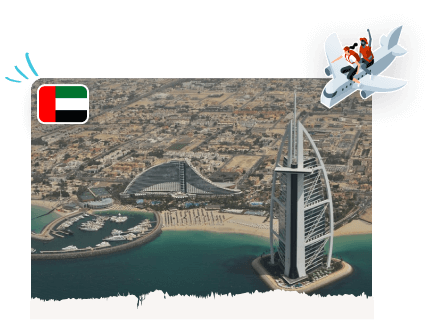
Having a look at the historical chronology, we see that many political and cultural events took place in the memory of the countries of the world on December 2 in different years. For instance, Napoleon Bonaparte I proclaimed himself emperor of France on December 2, 1804, 2-year-old Puyi ascended the Chinese throne on December 2, 1908, and the Republic of Laos was declared on December 2, 1975. On December 2, Baku cosmonaut Musa Manarov made his first flight on the Soyuz TM-11 spacecraft in Azerbaijan (1990). In 1971, the United Arab Emirates (UAE) declared its independence. This independence, which took place on December 2, made its name in history with the unification of seven emirates and the creation of one country. This country, which is named al-Amirat al-Arabiya al-Muttahida in Arabic, is located in the eastern part of the Arabian Peninsula on the shores of the Persian and Oman Gulf. The United Arab Emirates, which borders Qatar in the north, Saudi Arabia in the south and west, and Oman in the southwest, is now in a position to compete with world-leading countries in terms of its economy. What is the capital of the United Arab Emirates? The capital of United Arab Emirates is Abu Dhabi city. The UAE consists of seven emirates: Abu Dhabi, Dubai, Sharjah, Umm al-Qaiwain, Fujairah, Ajman, and Ras al Khaimah. Abu Dhabi and Dubai account for 93% of the country. History of the UAE:
Ancient Times
The territory of the UAE, distinguished by its economic development among the developed countries of the world, has been one of the old settlements. Human and animal statues and the remains of architectural structures have been found in this area during archaeological excavations and anthropological research. Because of these fossils, it was discovered that the ancient people living here had a high culture. An example of this is the Jebel Faya site near the city of Sharjah. Although no human bones were found in this archaeological site, a highly developed urban culture was discovered.
The Middle Ages
The social, political, and economic development of Europe in the Middle Ages has allowed it to spread throughout the world. This spread has also manifested itself in the UAE. At the beginning of the 16th century, significant changes began in the history of the countries located in these areas, with the appearance of the first European colonizers on the shores of the Persian Gulf. The Portuguese navy entered the Strait of Hormuz in 1507, getting ahead of the armies of other European countries. The navy began to occupy these lands and pursue its colonial policy on the Arabian coast of the Persian Gulf. Still, the Ottoman Empire struggled with Portugal until the end of the 16th century to maintain its position in the region. As a result of this struggle, Portugal was unable to establish its dominance in those territories as it planned. One of the reasons for this weak colony was the new contenders for control of the Persian Gulf region: Britain and the Netherlands also had an eye on these lands. Many European countries had eyes on the coast of Arabia at that time. Britain, which was smarter and more skilful in exploiting the conflict between Iran and Portugal, was able to oust the Portuguese from the region. Finally, Britain seized Hormuz in 1623, and it was able to expel the Netherlands from the Persian Gulf, and after more than 100 years of rivalry, and to drive Portugal out of the area as well. The Ottoman Empire, the only state in the Persian Gulf that could compete with Britain, weakened in the late 18th and early 19th centuries, and the British became more influential in these areas. In addition to foreign powers, local tribes also resisted Britain. As the British strengthened their naval fleet in the Strait of Hormuz, the sailors in the region knew that this political move would prevent them from opening up to the sea. Therefore, they often attacked British ships. Britain was able to break the resistance of the local population against the British under the pretext of fighting the “sea pirates” so as not to annoy the local community. After that, the British were able to take control of trade and waterways in the Persian Gulf. European colonizers called the area the “Pirate Coast” because of the severe resistance of the Arab tribes in the Persian Gulf region during each visit in the eighteenth and nineteenth centuries. After Britain established its power in the area, it changed the unpleasant name to “Trucial States” in 1853. Later it was called “Trucial Oman.”
The Twentieth Centuries
In the twentieth century, the struggle for control of oil regions has been intensifying. It was during this period of escalation that the oil fields in the Persian Gulf did not escape the attention of central London, and from the 1930s onwards, Britain began to draw up its plan for these areas. During World War II, British regular forces began to be deployed in some military facilities in the emirates.
Unification of Emirates
Are you wondering when did United Arab Emirates become a country? Well, the first step in the establishment of the United Arab Emirates was during the meeting of Sheikh Zayed, Abu Dhabi Governor and Sheikh Rashid, Dubai Governor, which took place on February 18, 1968. During the meeting, the sheikhs of both emirates agreed to unite their emirates and create a single federation. However, the sheikhs decided to involve other remaining emirates of “Trucial Oman” in this issue to protect the future history of the region. They even wanted to inform the leaders of Bahrain and Qatar about joining the federation. A week after the meeting of the rulers of Abu Dhabi and Dubai, United Arab Emirates, a meeting of the sheikhs of “Trucial Oman” and rulers of Qatar and Bahrain was held. The participants signed an agreement on the establishment of the Federation of Arab States. The establishment of the Federation of Arab States was praised by the conservative administration of the Persian Gulf. The monarchical nature of the federation caused protests from several public organizations. In 1971, Bahrain and Qatar declared their independence. On December 2, 1971, a closed meeting of the rulers of seven emirates was held in Dubai. The conference announced the creation of a new federal-state called the United Arab Emirates. Although the United Arab Emirates now consists of seven emirates, it consisted of six emirates when the new state was created, as the Emirate of Ras al-Khaimah joined the federation on February 10, 1972, not on December 2, 1971, along with the other six emirates. Although the United Kingdom granted political independence to the United Arab Emirates, it maintained its strong position here. They still worked as advisers and specialists in the legal system, the state apparatus, and the army. The United Kingdom continues to use military bases in the Emirate of Sharjah, sending military equipment and weapons to these armies if necessary. Economic ties between British companies and the UAE are growing. The United Kingdom provides most of the federation’s imports and orders for infrastructure.
The United Arab Emirates and the United Arab Emirates Population
 The United Arab Emirates consists of seven emirates:1. Emirate of Abu Dhabi
The United Arab Emirates consists of seven emirates:1. Emirate of Abu Dhabi (Arabic - إمارة أبو ظبي) - the largest emirate in the United Arab Emirates. The capital of the Emirate of Abu Dhabi is Abu Dhabi. Abu Dhabi is also the capital of the UAE. Its second-most populous city is Al Ain. Area – 67,340 km2 Population – 1,975,000 people (2008) Abu Dhabi makes up 87% of the UAE. It is also the second most populous emirate. Two significant events in the 1970s affected the economic situation of the Emirate of Abu Dhabi. The first is the establishment of the UAE on December 2, 1971, with Abu Dhabi as the political and ruling capital. The second was the establishment of relations between oil countries and foreign oil companies and the sharp rise in oil prices after the October 1973 war. 2. Emirate of Dubai (Arabic - إمارة دبي) – the most luxurious and modern emirate in the United Arab Emirates. Area – 3885 km2 Population – 4,177,059 people (2019) The Emirate of Dubai was a small fishing town until the 1970s. It has been developing rapidly since 1970 and is now considered the most developed city not only in the UAE but in the region and the world. 3. Emirate of Sharjah (Arabic - الشارقة) – the smallest emirate of the United Arab Emirates. Area – 2590 km2 Population – 2,374,132 people (2019) There are enclaves in the Emirate of Sharjah, such as Kalba, Dibba Al-Hisn, and Khor Fakkan. There is a car bridge between Sharjah and the capital of United Arab Emirates - Dubai. It is a symbolic bridge between those cities. Half of the bridge is in Sharjah and half in Dubai. When there is a car accident on this bridge, the police of both cities investigate it. 4. Emirate of Ajman (Arabic - إمارة عجمان) – the fourth emirate of the United Arab Emirates. Area – 259 km2 Population – 504,846 people (2017) 5. Emirate of Al Fujairah (Arabic - ٱلْفُجَيْرَة) – the fifth emirate of the United Arab Emirates. Area – 1166 km2 Population – 152,000 people (2009) 6. Emirate of Ras Al Khaimah (Arabic - رَأْس ٱلْخَيْمَة) – the sixth emirate of the United Arab Emirates. Area – 2,486 km2 Population – 416,600 people (2018) 7. Emirate of Umm al-Quwain (Arabic - أم القيوين) – the seventh Emirate of the United Arab Emirates. Area – 755 km2 Population – 72,000 people (2017) As you have all the needed information about the Emirates, apply for the UAE e-visa now and travel in time in just one trip!


